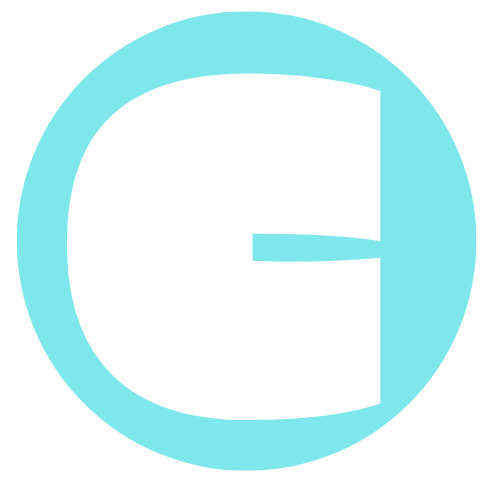This post may contain a affiliate links which means we may gain a percentage of your purchases at no cost to you. We only suggest products and services that we have used and we feel is a valuable resource. We may also from time write a sponosred post for brands that we love or feel they provide value and are worth buying and promoting. Please read our disclaimer for more info | Edited by By Pro Writing Aid. Pro Writing Aid is your little writing buddy that helps you become a better writer. You can check it out my affiliate link here.: PRO WRITING AID
Navigating the World of Academic Research
Academic Toolkit Series
Content Level
Excerpt:
Dive into the complexities of academic research with our comprehensive guide. Discover the intricacies of navigating academic paywalls that often restrict access to essential scholarly articles. Understand the significance of open-access resources that are democratizing information across the globe. This guide not only enlightens students and parents about the barriers in academic research but also equips them with the knowledge to effectively overcome these challenges. Explore the transformational power of digital libraries and AI-assisted research tools that are reshaping the landscape of academic studies.
Understanding the Ins and Outs of Academic Paywalls
For university students diving into research, academic paywalls can be a significant hurdle.
Think of paywalls as the tollbooths of the research world: to access the complete content of many scholarly articles, you often have to pay.
While a snippet of information, like an abstract or keywords, might be free, the full study with all its crucial findings is locked away.
So, why do these paywalls exist? Publishing academic work involves several costs — from maintaining databases to peer-review processes, which ensure the research is credible.
These fees are a way for publishers to cover those costs. While students at wealthy institutions may navigate these waters smoothly, thanks to university subscriptions, others might feel like they’re hitting a wall, literally.
The good news? An increasing number of free academic resources are becoming available, leveling the playing field for everyone.
The Rise of Free Academic Resources
Free academic resources are revolutionizing how we access knowledge. Open-source journals, for example, offer a treasure trove of scholarly publications without any financial barriers.
Then, there are online platforms like Coursera and Khan Academy, which have made high-quality education accessible to anyone with an internet connection.
Even top universities like Harvard and MIT are sharing their course materials online at no cost.
For those delving into more profound research, many theses and dissertations are also available for free online.
Digital libraries, such as Project Gutenberg and the Open Library, open up a world of literature and scientific documents, catering to various interests.
Databases like PubMed Central and the Social Science Research Network offer free access to a multitude of research articles.
Quality, Accessibility, and Impact on Research
Regarding quality, it’s important to note that not all free resources are created equal. However, many open-access platforms maintain rigorous peer-review processes, proving that free can still mean reputable.
Accessibility is another strong suit of open-access resources. They break down barriers, offering everyone from any corner of the globe the same opportunity to learn.
Regarding the impact on research, while paywalled journals often contain specialized content, open-access resources can distribute knowledge more widely.
This democratization can enhance the reach and influence of research, especially in parts of the world where paywalled resources are unaffordable.
The Future of Academic Resources
The landscape of academic resources is continuously evolving. Paywalled resources, with their established economic models, are likely to stick around but might become more flexible to improve access.
Open Access, while not a magic bullet, is growing and providing a compelling alternative, helping to democratize academic knowledge.
Technological advancements like AI and blockchain could also play a role in shaping the future of both paywalled and open-access resources, improving user experience and ensuring the integrity of academic work.
In conclusion, the goal isn’t to pick a side between paywalled and open-access resources. It’s about finding a balance that takes advantage of both systems.
By working together, they can facilitate a wider sharing of knowledge and drive research and discovery forward, ensuring that academic resources contribute to learning and innovation for everyone.
For students and parents navigating the academic world, this knowledge is power. It equips you with a better understanding of how to access scholarly materials effectively and how to support the ongoing quest for knowledge in the ever-changing educational landscape.
Flip Side Of Open Access
Open Access (OA) publishing shifts the cost burden from readers (and, by extension, their institutions’ libraries) to authors, who may have to pay an Article Processing Charge (APC) to make their work freely available to the public.
This model aims to make research findings accessible to all, but it does raise several concerns for both students and academic writers.
The average fee for publishing in an Open Access (OA) journal, often referred to as an Article Processing Charge (APC), can vary widely depending on the field of study, the reputation of the journal, and the publisher.
As of early 2023, the APCs could range from a few hundred dollars to as high as $5,000 or more for journals that are impactful or published by major academic publishers.
Drawbacks for Students and Academic Writers:
Drawbacks for Students and Academic Writers:
Financial Barriers
The most immediate drawback is the potential financial barrier for authors. Not all researchers have the means or the institutional support to afford the APCs, which can be prohibitively expensive.
Quality Concerns
Some fear that the OA model may prioritize the ability to pay over the quality of work submitted, although many reputable OA journals maintain rigorous peer review processes.
Equity Concerns
This model can disadvantage scholars from less affluent institutions or countries, as well as independent researchers who may not have access to funds to cover APCs.
Pressure on Research Funding
Research grants may need to allocate funds specifically to cover publication costs, potentially reducing the amount available for actual research activities.
Predatory Journals
The OA model has given rise to predatory journals that exploit the pay-to-publish model without offering proper editorial and peer review services, potentially entrapping students and less experienced researchers.
Benefits of Open Access for Students and Academic Writers:
Despite these drawbacks, there are also significant advantages to the OA model:
Wider Dissemination
OA articles are freely available to a global audience, which can lead to broader dissemination and increased citation of an author’s work.
Faster Publication
OA publishing can be quicker than traditional publishing routes, enabling timely dissemination of research findings.
Educational Advancement
Students benefit from accessing the latest research without the barriers of subscription costs, which can enhance their education and research activities.
Public Good
It supports the principle that the public should have access to research, especially when it is publicly funded.
Increased Collaboration
OA facilitates collaboration by making research findings more easily accessible to scholars worldwide.
Financial Aspects
To mitigate some of the financial issues associated with OA, there are a variety of models and initiatives in place:
Institutional and Funding Body Support
Many institutions and funding bodies cover APCs for their researchers.
Repository Posting
Authors can often post versions of their articles in institutional or subject repositories, providing a form of OA without the APC.
Waivers and Discounts
Many OA publishers offer waivers or discounts for authors from low-income countries or those who lack funding.
Hybrid Journals
Some subscription-based journals offer an OA option for individual articles, giving authors flexibility.
Preprint Archives
Researchers in many fields use preprint archives to share their work before formal publication freely.
Summary
This article is an essential guide for students and parents navigating the intricate world of academic research. It addresses the challenges posed by academic paywalls and highlights the growing availability of open-access resources that enhance the accessibility of scholarly material. The guide explains the economic rationale behind paywalls and the liberating potential of free academic platforms. It also delves into the impact of technological advancements like AI and blockchain on academic research, suggesting that these innovations promise to democratize access to information further. By providing strategies to access and utilize these resources, the article empowers readers to effectively support their educational journeys and contribute to a broader dissemination of knowledge.
BEFORE YOU CLICK TO THE NEXT ARTICLE, PLEASE LEAVE YOUR THOUGHTS BELOW
We invite you to scroll down and leave your mark in the comments section. Whether it’s a thought that sparked, a reaction that stirred, a suggestion for improvement, or an innovative idea you’re burning to share, your input is the key that unlocks our collective potential. Dive into the dialogue below and let your voice be heard.
#ShareYourInsightBelow













